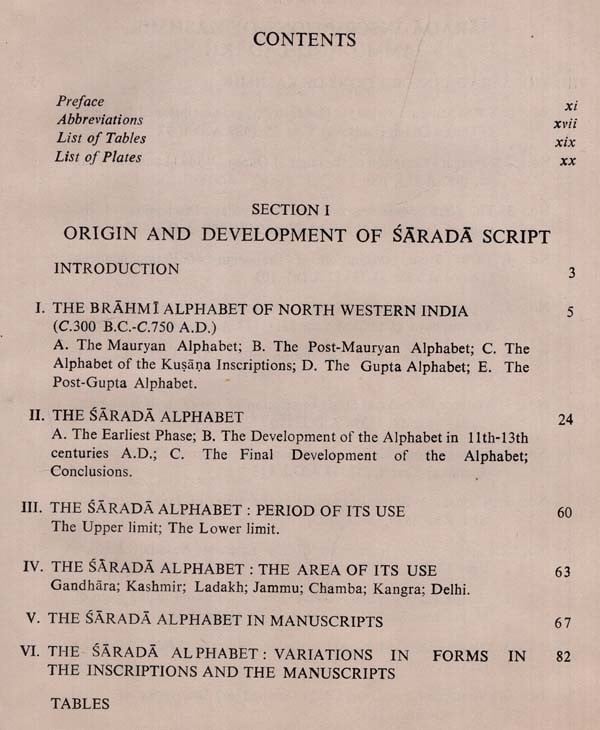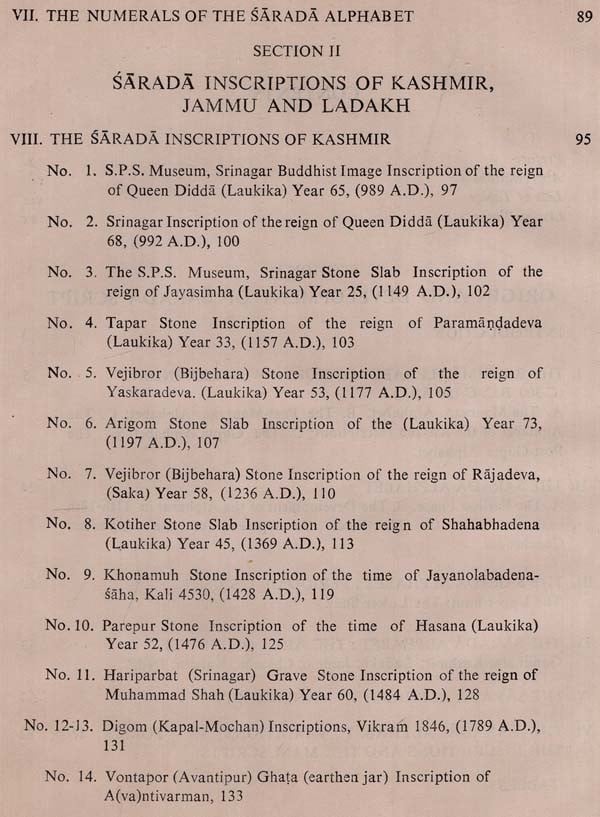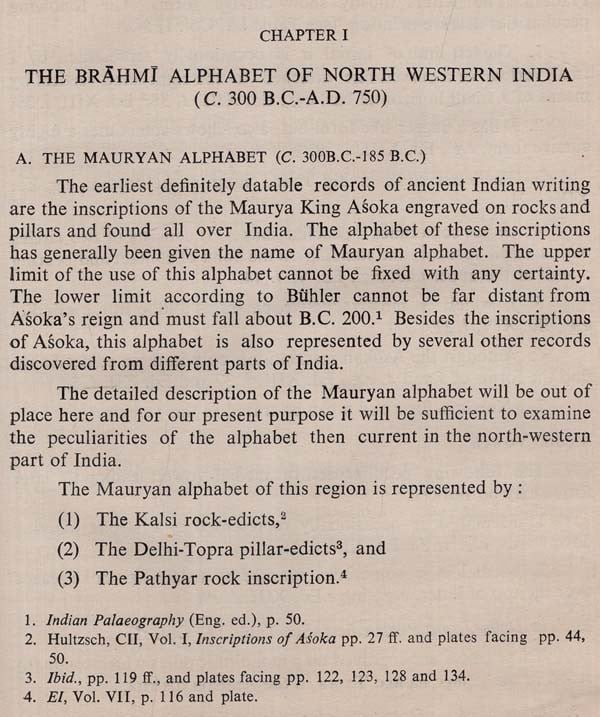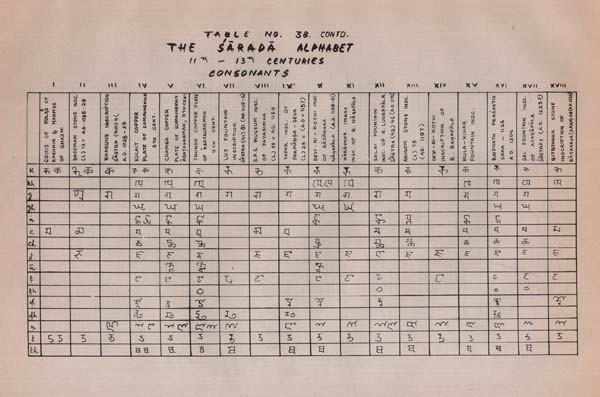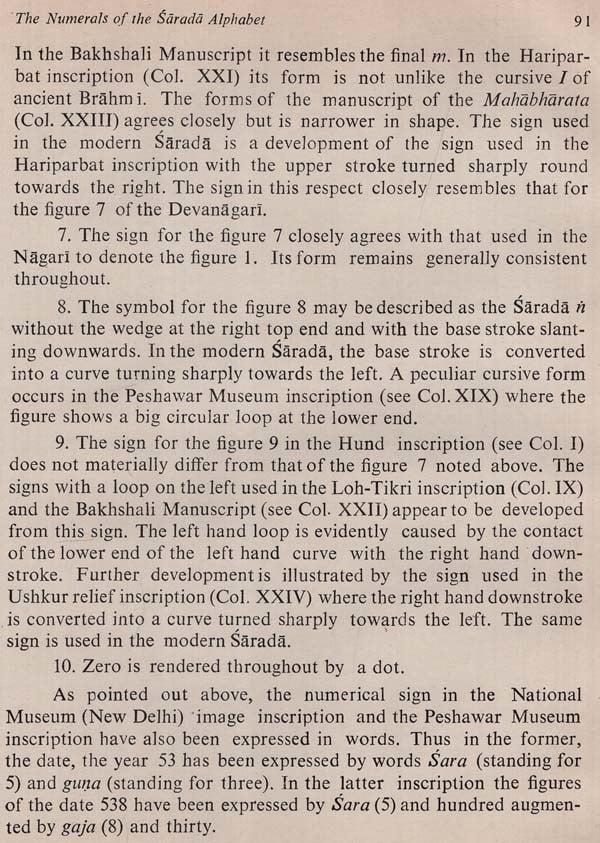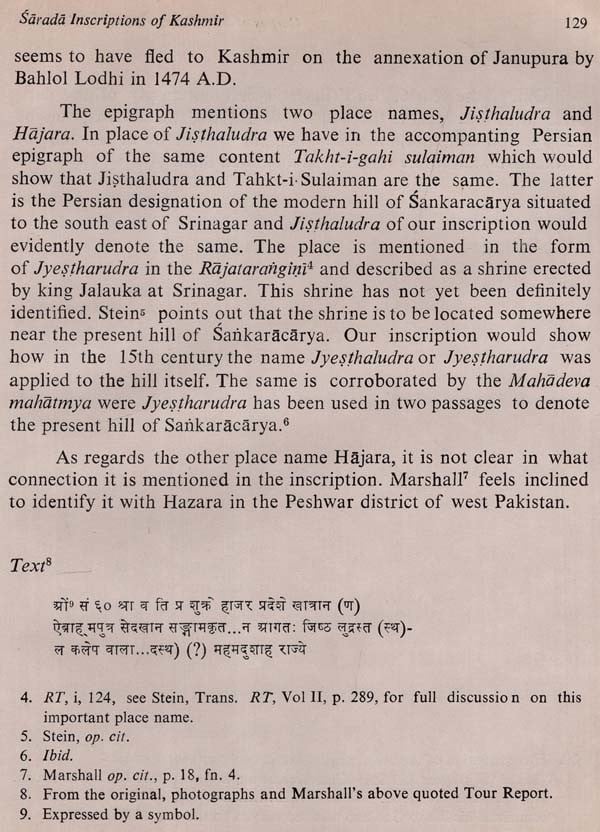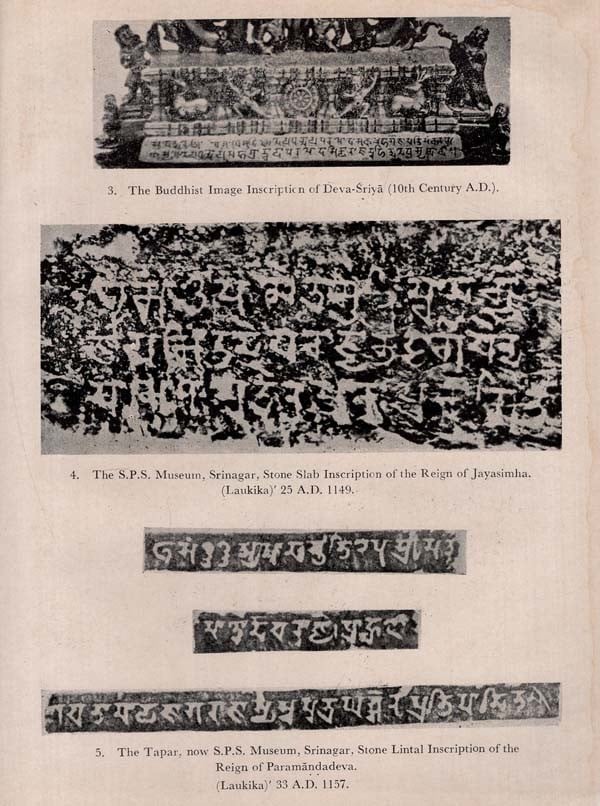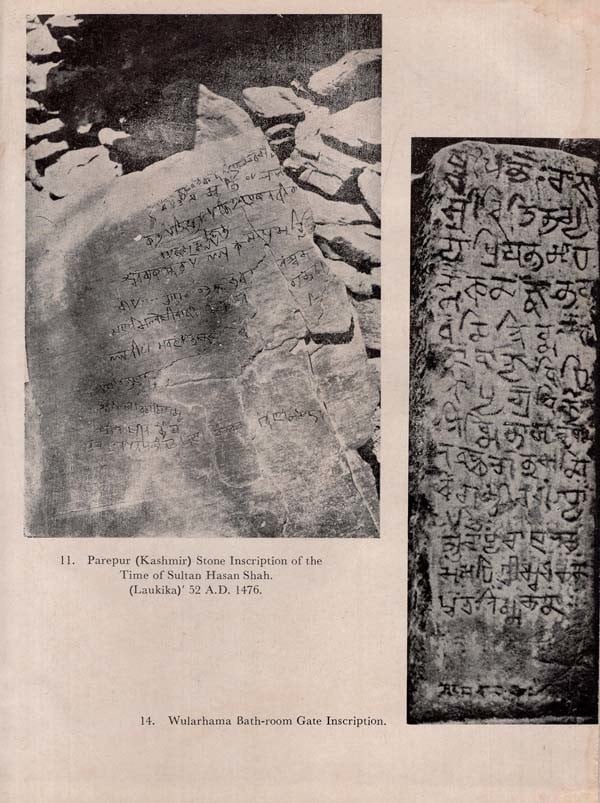
Corpus of Sarada Inscriptions of Kashmir- With Special Reference to Origin and Development of Sarada Script (An Old and Rare Book)
Book Specification
| Item Code: | UAS370 |
| Author: | Bhusan Kumar Kaul Deambi |
| Publisher: | Agam Kala Prakashan, Delhi |
| Language: | English |
| Edition: | 1982 |
| Pages: | 210 (With B/W Illustrations) |
| Cover: | HARDCOVER |
| Other Details | 9.50 X 7.50 inch |
| Weight | 560 gm |
Book Description
Kashmir has the unique fortune in having recorded history in Sanskrit and Persian and the writers on the history and Culture of Kashmir have based their account mainly on the literary sources and have not felt it necessary to tap the epigraphical sources as well and to check the result with the contemporary epigraphical data.
However the importance of epigraphy as a valuable source of history can hardly be overlooked and such an attempt has been made in the present monograph to edit for the first time the important inscriptions discovered from various places in Kashmir and having a bearing on the history and culture of Kashmir. Attempt has also been made to analyse critically the content of the important inscriptions of Kashmir to see what light they throw on the contemporary historical and cultural conditions.
The Extent Sanskrit inscriptions of Kashmir are in the Sarada Characters, Sarada is an important alphabet of ancient India. It having remained in use for several centuries in an extensive area of the north-west extending from Kabul to Delhi, including Kashmir and Himachal Pradesh. Nearly the entire extent Sanskrit literature of Kashmir is written in this script and its study is vitally important for the proper understanding and decipherment of the ancient Kashmiri Texts. Thus the work gives for the first time, with illustrative tables a systematic and comprehensive account of the origin and the development of the Sarada alphabet so that interested scholars and research students any use it as a guide book for the study of the old Sanskrit Inscription and manuscripts of Kashmir written in this script and preserved in the important Museums and Manuscript Literature in India and abroad.
Dr. B.K. Kaul Deambi had his early education in Srinagar, Kashmir and later obtained Master's Degree with distinction in three disciplines, Sanskrit, Hindi and Ancient Indian History. Culture and Archaeology and Ph.D. form the Punjab University, Chandigarh. He was awarded the university medal for securing first position in ordered to merit in Ancient Indian History, Culture and Archaeology.
For a number of Years Dr. Deambi worked as professor of Sanskrit and Hindi in Gandhi Memorial College, Srinagar and did extensive research work under various U.G.C. schemes. At present he is Reader in the centre of central Asian Studies, Kashmir University, Srinagar. He has contributed quit a good number a papers to various reputed journals and Felicitation Volumes published in the country and his three works, viz. Early History and Cultural Study of the Sarada Inscriptions of the North Western India and Pakistan and Paleographic study of the Bower Manuscripts, are ready for publication.
Dr. Deambi is intimately associated with the several academic societies in the country and is a member of the executive committee of the Epigraphically Society of India and the Place Names Society of India
Among the ancient Indian scripts, the Sarada has a pride of place. Though evolved from the western branch of Brahmi nearly twelve hundred years ago, it continues to be in use even today. It is an alphabet of Kashmir par excellence and has also remained a popular script of an extensive area of North Western India and is still represented in the Panjab and Himachal Pradesh by its descendants the Gurumukhi and the Takari. Nearly the entire extant Sanskrit literature of Kashmir is written in this script and as such, the importance of its study for the proper understanding and the decipherment of ancient Kashmirian texts now preserved in several Manuscript libraries in India and abroad can hardly be exaggerated.
In the second half of the 8th century we find in the Brahmi alphabet of North Western India a distinct development of new alphabet which, though agreeing in many respects with that used in the epigraphic and literary records of the 6th and 7th centuries, including the famous Gilgit Manuscripts, shows several essential differences in the forms of several characters. This alphabet is known as the Sarada alphabet. Though an alphabet of Kashmir par excellence, the Sarada has remained for several centuries a popular script of an extensive area of North Western India including Gandhara or north western part of Pakistan, Ladakh, Jammu, Himachal Pradesh, Punjab and Delhi. Nothing is known for certain with regard to the origin of the name of the alphabet, but this much is certain that it must have origi nated in Kashmir which, from earliest times, has been the principal seat of Sarada or the goddess of learning and has been named after her as Sarada-mandala or Saradapitha.
**Contents and Sample Pages**

